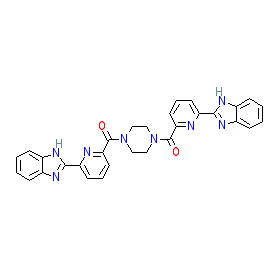GtoPdb is requesting financial support from commercial users. Please see our sustainability page for more information.
|
Synonyms: analogue 7 [PMID: 27933891] | BT-11 | BT11 | Example 1 [US9556146B2]
Compound class:
Synthetic organic
Comment: Omilancor (BT-11) is an orally active anti-inflammatory agent that operates as a LANCL2 pathway activator [3,7]. It is Example 1 as claimed in patent US9556146B2 [1]. The physicochemical properties of BT-11 suggest that it may offer a drug with minimal systemic distribution, and be more suited to local action in the acidic environment of the gut [6,8].
Ligand Activity Visualisation ChartsThese are box plot that provide a unique visualisation, summarising all the activity data for a ligand taken from ChEMBL and GtoPdb across multiple targets and species. Click on a plot to see the median, interquartile range, low and high data points. A value of zero indicates that no data are available. A separate chart is created for each target, and where possible the algorithm tries to merge ChEMBL and GtoPdb targets by matching them on name and UniProt accession, for each available species. However, please note that inconsistency in naming of targets may lead to data for the same target being reported across multiple charts. ✖ |
|
|||||||||||||||||||||||||||||||||||
| Bioactivity Comments |
| BT-11 has demonstrated therapeutic efficacy in 3 validated mouse models of colitis [2]. |
| Selectivity at other protein targets | ||||||||||||||||||||||||||||||||||
| Key to terms and symbols | Click column headers to sort | |||||||||||||||||||||||||||||||||
|
||||||||||||||||||||||||||||||||||








